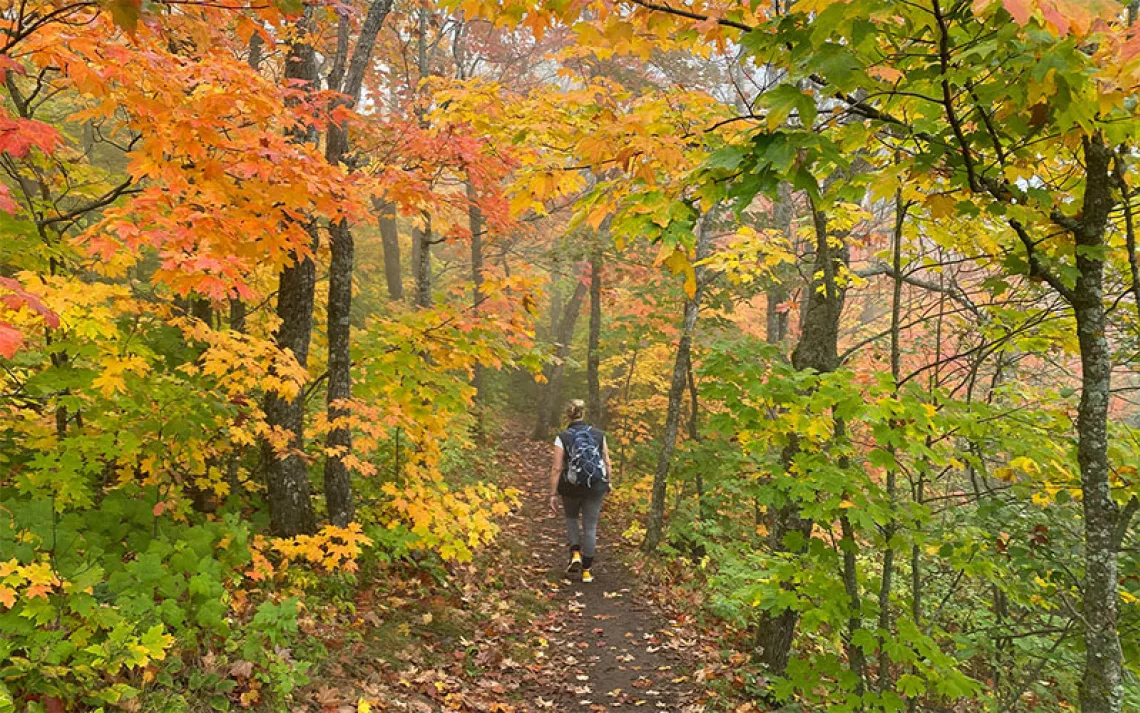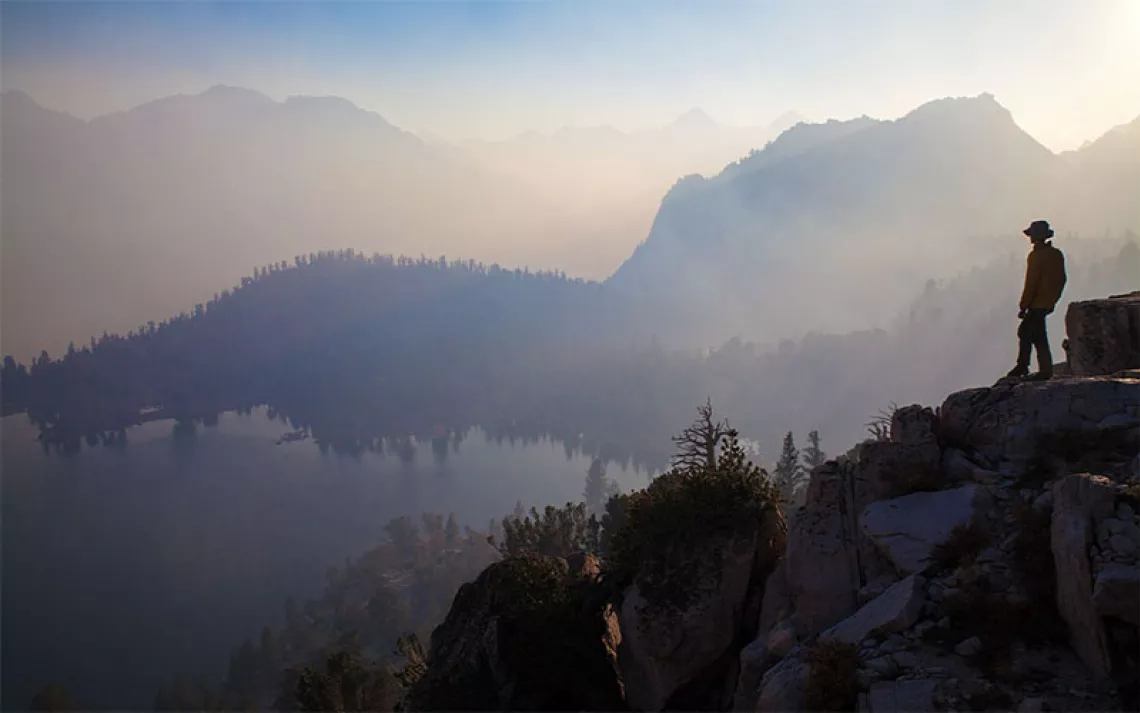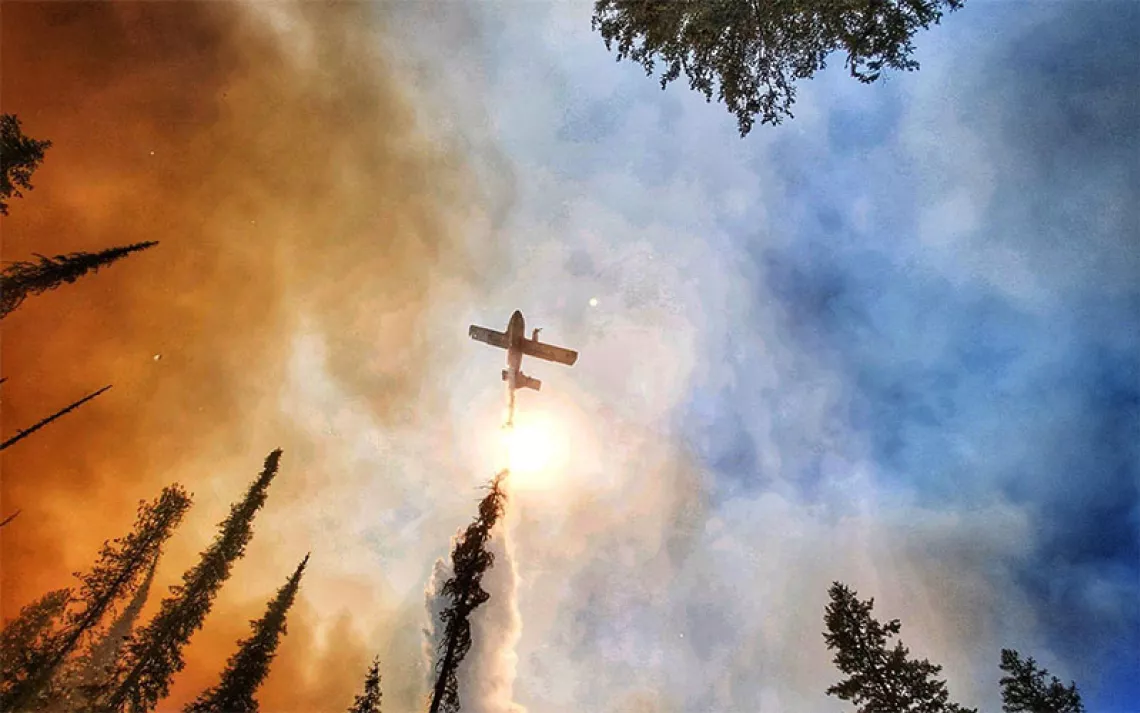Posters Imagine Climate Change Wrecking Our Iconic Landscapes
Artist Hannah Rothstein hacks classic artworks as a warning about climate chaos
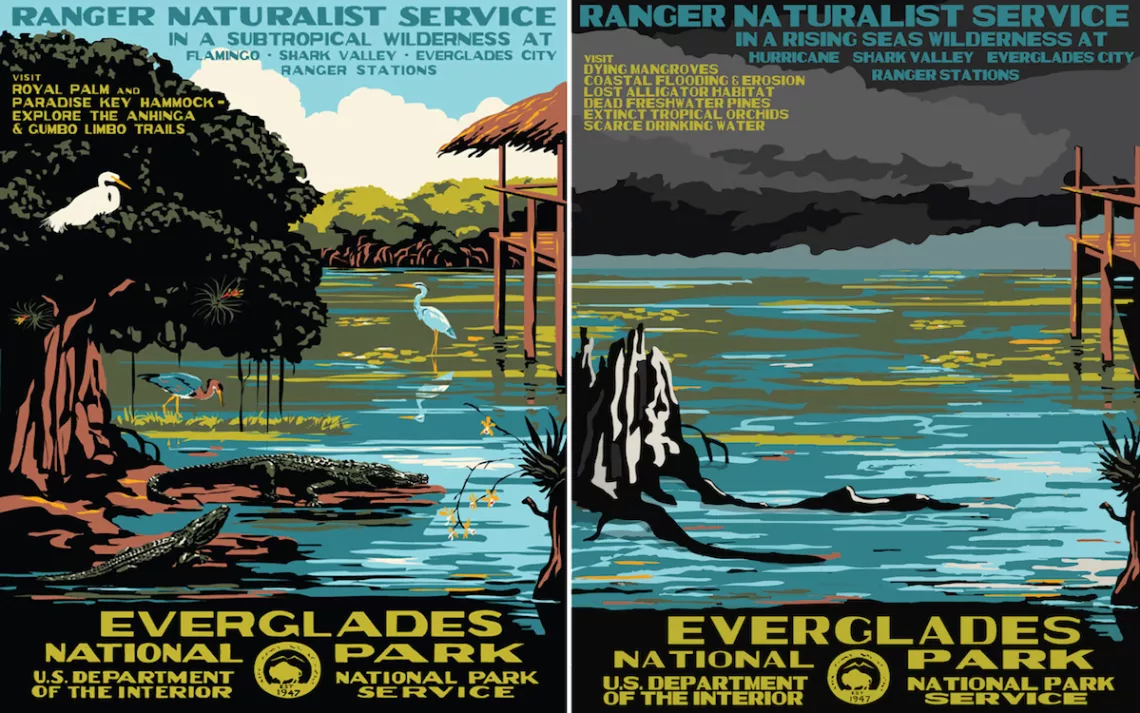
Poster images courtesy of Hannah Rothstein
You might have missed it (what with all the news about melting ice sheets and making your preparations for the Peoples Climate March), but April 15 to 21 is National Park Week. Sure, it’s something of a government-concocted Hallmark holiday, but it’s as good an opportunity as any to celebrate the conservation ethic that has preserved millions of acres of U.S. forests, deserts, rivers, and seashores.
The Trump administration is making an attempt, of sorts, to promote the occasion. Interior Secretary Ryan Zinke has been barnstorming parks in California and spent last Friday afternoon granting visitors to Sequoia & Kings Canyon National Parks surprise free admission. And of course there was President Trump’s unexpected donation of his first presidential paycheck to the National Park Service. While many folks panned the move (it was a media stunt so lame it gave lame media stunts a bad name), the White House was unbowed and tried its best to stick to its main talking point: We care.
California artist Hannah Rothstein prepared for National Park Week in her own way—by redesigning some of the classic, Depression-era national park posters and giving them a dystopic, 21st-century feel by imagining what the parks could look like in 2050, after global climate change has its way with them. Between 1938 and 1941, the Works Project Administration Federal Art Project created a series of 14 posters to celebrate the national parks and urge Americans to visit them. The hand-silkscreened posters have become iconic in their own right, signature examples of art deco style. They’ve also inspired imitators like Doug Leen, a.k.a. Ranger Doug, who in recent years has expanded the original concept to include additional parks.
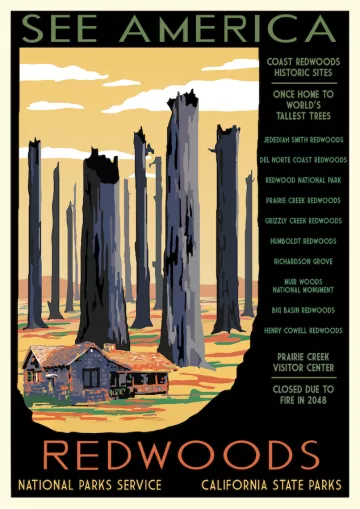
Worried about the Trump administration’s retrograde environmental agenda, Rothstein took a selection of the original posters and the newer Ranger Doug posters and hacked them to illustrate how climate change could impact some of our most famous landscapes. In her Everglades poster, the gators and wading birds have disappeared; instead, the park promises visitors “dying mangroves” and “extinct tropical orchids.” At Great Smoky Mountains National Park, the forest is on fire—a scene that is less Cassandra prediction than a reminder of the fires that ripped through the park last summer. Rothstein’s poster for Yellowstone features an emaciated grizzly and promotes “dying trout” and “pine beetle infestations.”
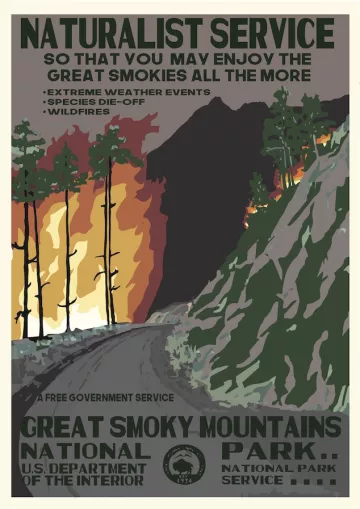
Grim stuff, to be sure. But Rothstein says it’s for a good cause—to communicate the dangers from climate change in a way that might prove to be more emotionally compelling than facts and figures.
“For whatever reason, a lot of people struggle to accept that climate change is real,” Rothstein says. “Numbers and statistics go in one ear and out the other. I wanted to make climate change feel concrete and close to home.”
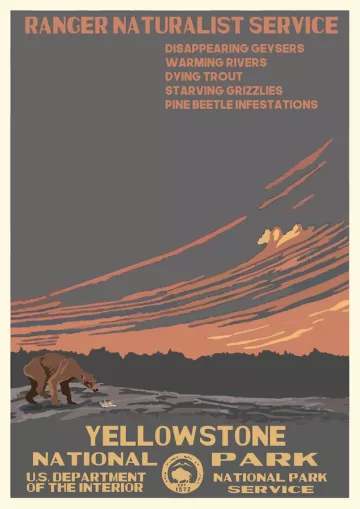
If 1930s-era look and feel of the climate change posters feel a bit like, well, propaganda, consider this: While the National Park Service under President Obama made climate change adaptation a top priority (see here and here), staffers with the NPS’s climate program aren’t certain whether they will have funding to continue their work. And President Trump’s March 28 executive order on climate and energy policy could have a dramatic impact on the national parks’ health. In the short-term, Trump’s policies might allow for oil and gas drilling within the national parks themselves. And in the long-term, runaway greenhouse gas emissions will certainly transform parks that are already experiencing the stresses of climate change.
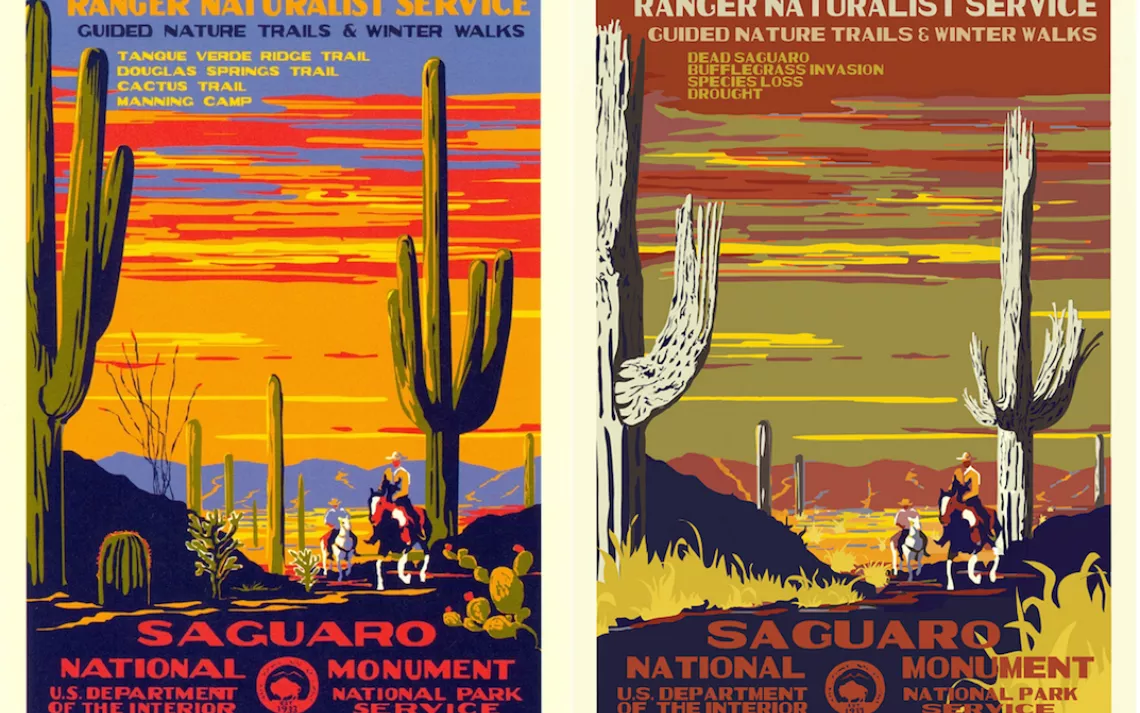
Rothstein’s National Park 2050 posters are for sale on her website, hrothstein.com. She says she’ll donate a portion of the proceeds to “climate-related causes and people fighting the good fight.” You could even buy an extra poster and mail it to 1600 Pennsylvania Avenue, NW, Washington, D.C., 20500, along with a little note telling its tenant that you’ll be watching to see whether he serves as a responsible steward of our public lands.
 The Magazine of The Sierra Club
The Magazine of The Sierra Club
